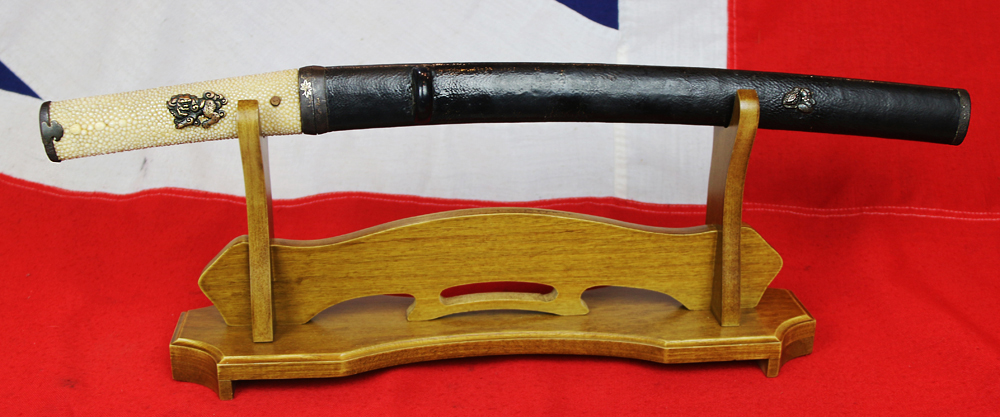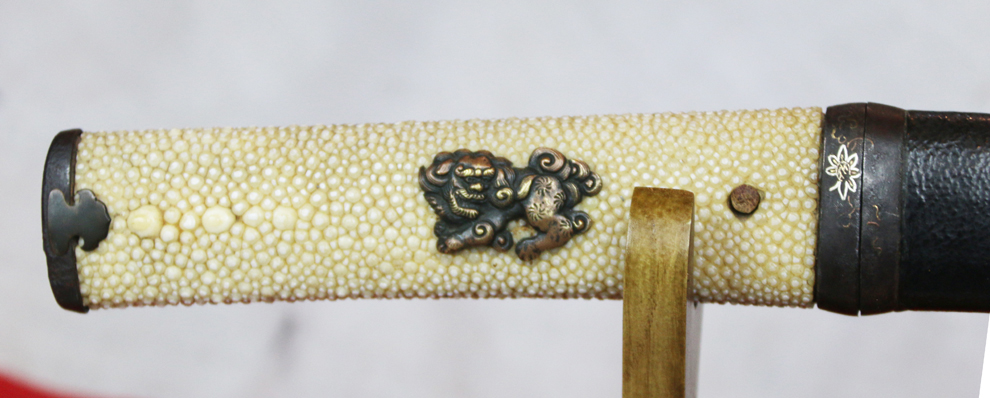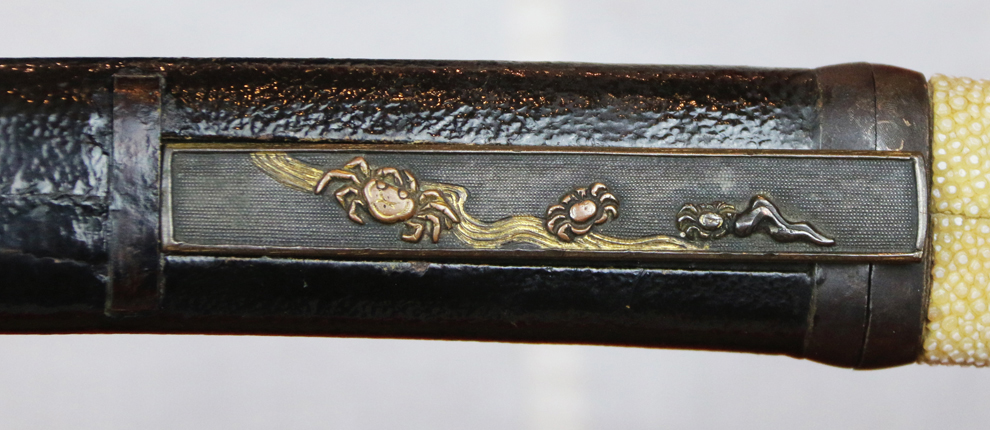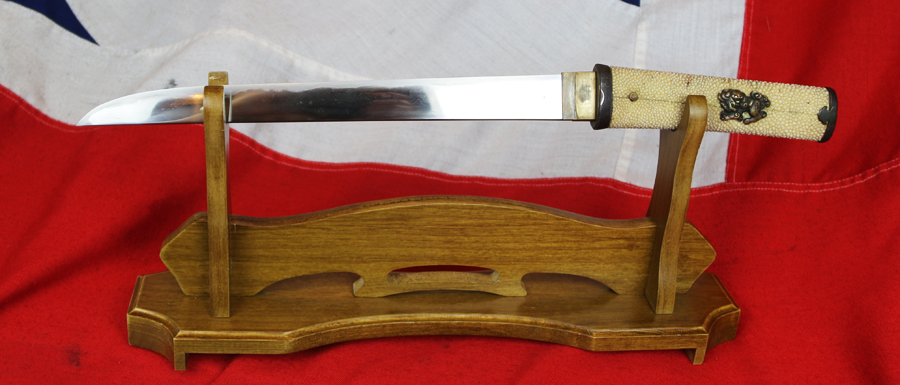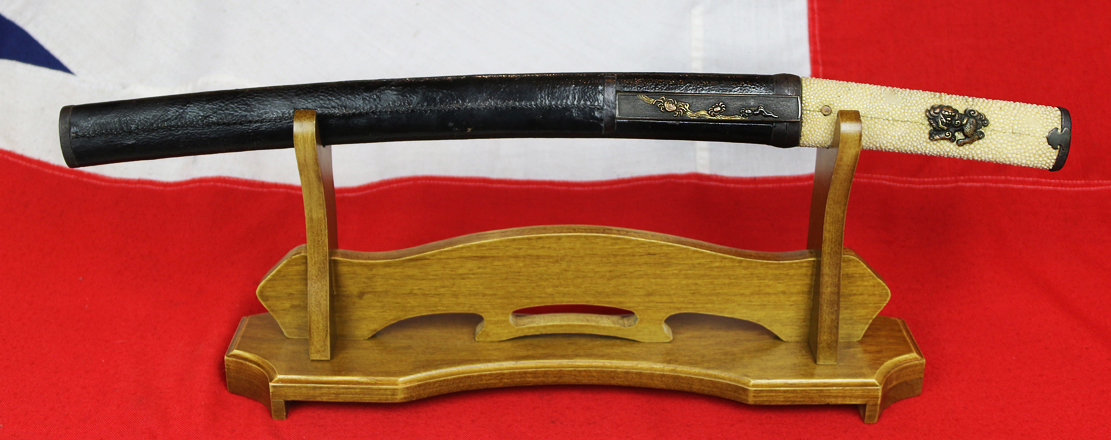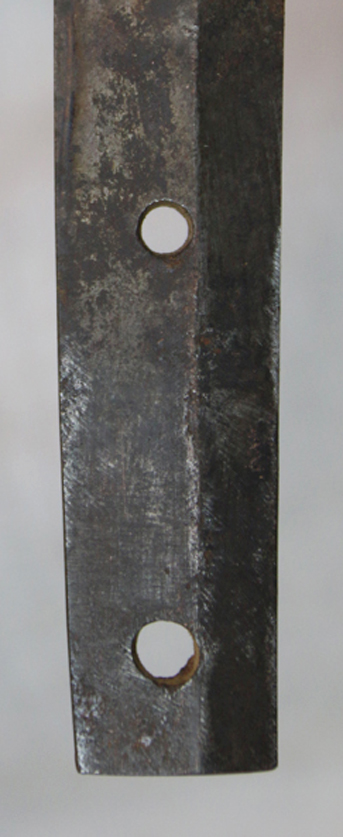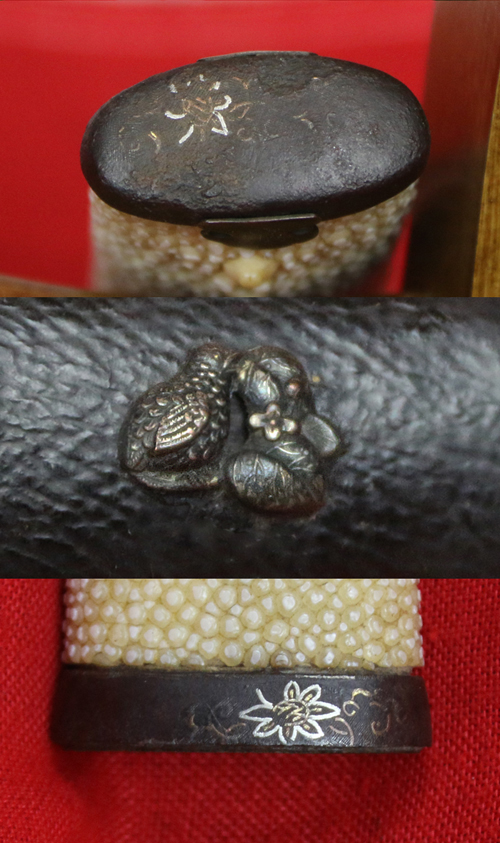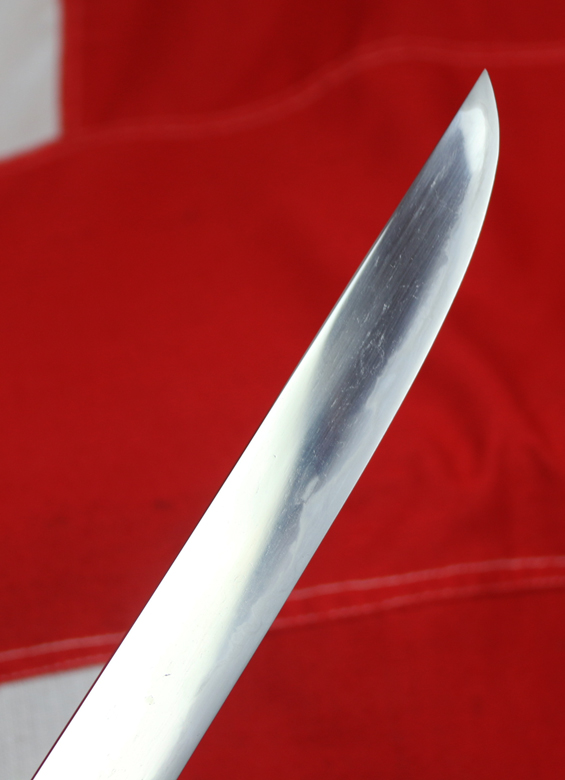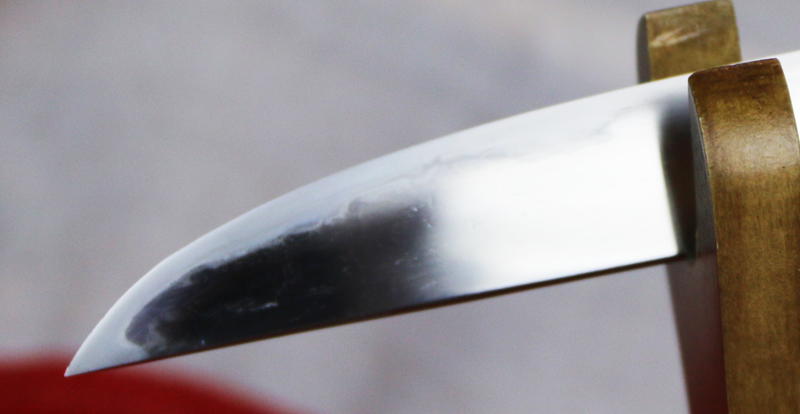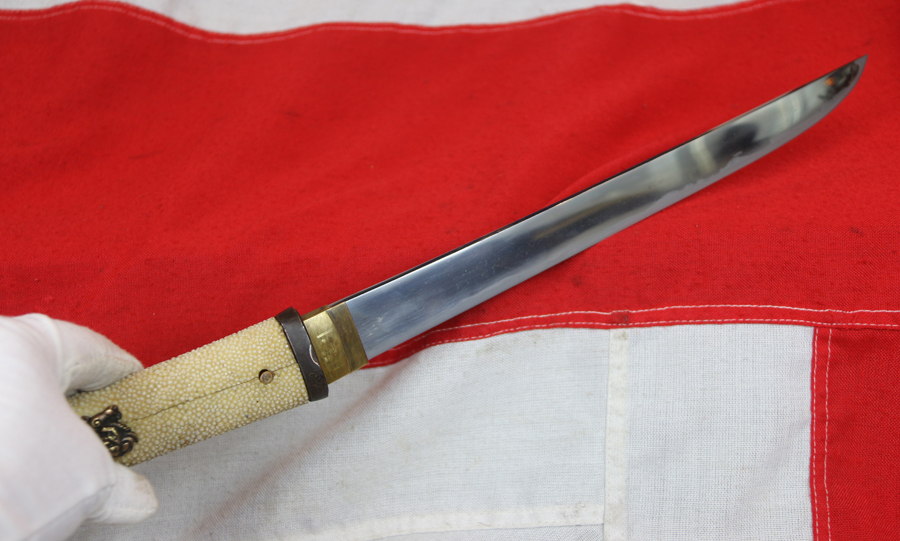A Beautiful Koto Period Ancient Aikuchi Tanto Circa 1500, With An Equally Beautiful Blade
Around 500 years old.
With kodzuka utility knife decorated with deep relief takebori crabs. Unusually the saya is covered with black lacquered leather. All original Edo period mounts and fittings. Silver inlaid iron hilt mounts with patinated copper menuki of shishi liondogs. The saya has a small mount of a silver inlaid quail. The blade has now just returned from re-polishing and looks absolutely beautiful. The tanto was invented partway through the Heian period, when it was mainly used as a weapon. With the beginning of the Kamakura period, tanto were forged to be more aesthetically pleasing, and hira and uchi-sori tanto were the most popular styles for wars in the kamakura period. Near the middle of the Kamakura period, more tanto artisans were seen, increasing the abundance of the weapon, and the kanmuri-otoshi style became prevalent in the cities of Kyoto and Yamato. Because of the style introduced by the tachi in the late Kamakura period, tanto began to be forged longer and wider. The introduction of the Hachiman faith became visible in the carvings in the tanto hilts around this time. The hamon (line of temper) is similar to that of the tachi, except for the absence of choji-midare, which is nioi and utsuri. Gunomi-midare and suguha are found to have taken its place. In Nambokucho, the tanto were forged to be up to forty centimetres as opposed to the normal one shaku (about thirty centimetres) length. The tanto blades became thinner between the uri and the omote, and wider between the ha and mune. At this point in time, two styles of hamon were prevalent: the older style, which was subtle and artistic, and the newer, more popular style. Blades could be of exceptional quality. As the end of the period neared, the average blade narrowed and the sori became shallow. The aikuchi is a tanto koshirae where the fuchi is flush with the mouth of the saya. Overall 21 3/4 inches long, blade length 12 1/4 inches
Code: 23142
3695.00 GBP

